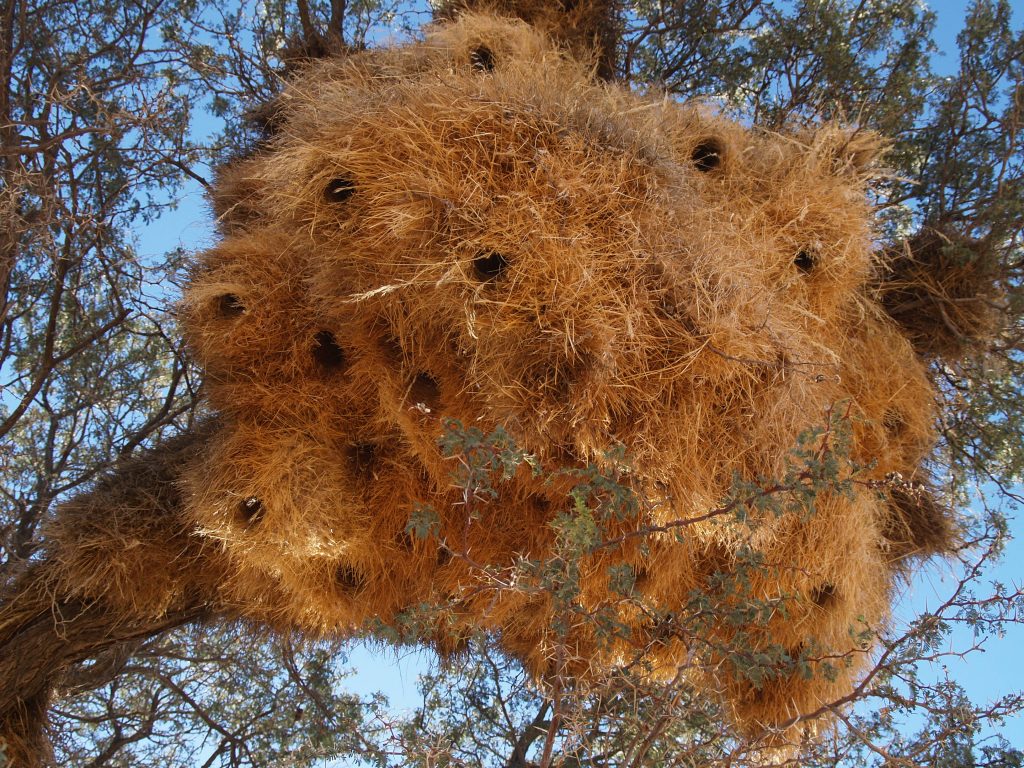Large nests help the sociable weavers stay comfortable in the harsh climate of the Kalahari Desert. During freezing winter nights, a move to the nest’s well-insulated center chambers helps the little birds stay warm. Scorching summer temperatures are easier to weather when roosting in one of the outer chambers of the nest.
Sociable weavers need less water than any other bird. Most never take a drink, getting all the moisture they need from their food: bugs. Insects make up 80 percent of their diet, and juicy harvester termites are a favorite.
The rest of the sociable weaver diet is seeds from grasses. Most of their food is collected while the birds are on the ground, but they are able to catch insects in flight, too.

With so much family under one well-thatched roof, Mom and Dad have lots of helpers for the new chicks. Two to six tiny spotted eggs are laid in a clutch. Both parents take turns incubating the eggs until they hatch in two weeks. Juvenile sociable weavers provide food for their younger siblings for the next three weeks when they fledge.
Parents even provide insects for their neighbors’ young. Studies have shown that chicks raised with helpers have a better chance at surviving than those raised by the parents alone.















